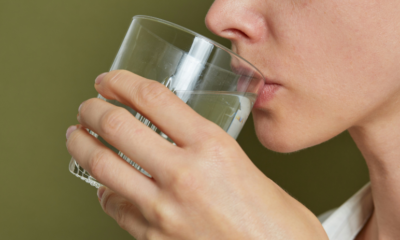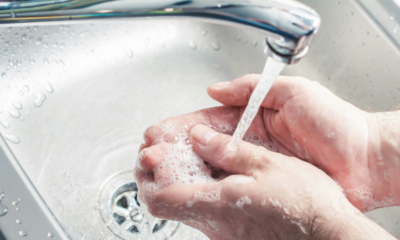Entertainment
Olympic Triathlon’s Water Woes: From Rogue Boats to Shark Alerts and Bacteria Risks

PARIS, France — Contrary to popular belief and cinematic portrayals, there are no sharks in the Seine River. However, the issue of water quality has been a recurring theme in Olympic triathlons ever since a shark watch took place during the 2000 Sydney Games.
Water quality and safety concerns have pervaded triathlon swimming events at the Olympics, including two of the last three Summer Games. The challenges of ensuring safe swimming conditions in Paris’ famed waterway are the latest chapter in this ongoing saga.
Despite these issues, organizers have insisted that both the triathlon and marathon swimming events during the Paris Olympics can safely take place in the Seine River. Such assurances come amidst health concerns similar to those faced during the Rio 2016 Games at Copacabana Beach.
“While these waterways are iconic and sources of national pride, it’s not worth risking health and safety,” said Dr. Nicole Iovine, an infectious diseases specialist at the University of Florida. “There are alternative venues available that would not pose such risks.”
The picturesque Seine, with the Eiffel Tower in the backdrop, provided a scenic view as triathletes crossed the bridge spanning the river. However, the visually stunning venue was marred by concerns over water quality. Elevated bacteria levels delayed the men’s race but eventually, the competition went ahead, much to the delight of television audiences worldwide.
“We have the most beautiful venue of any race in the Olympics,” boasted British gold medalist Alex Yee. The ambitious cleaning plan for the Seine included 1.4 billion euros ($1.5 billion) in infrastructure improvements. Nevertheless, a series of swim practice sessions were canceled and the men’s race was rescheduled due to persistent water quality issues.
“I didn’t think the Seine was that dirty,” noted French triathlete Léo Bergere, who won the bronze medal. “Big cities always face pollution challenges, but today they managed to deliver.”
The issue of contaminated waterways is not new. Before the Rio de Janeiro Olympics, a 16-month-long Associated Press study revealed that the city’s waterways were heavily contaminated with raw sewage. Tests showed that Copacabana Beach, a prominent venue for swimming events, exceeded California’s safety limits five times over a 13-month testing period.
In an effort to improve conditions, a private concessionaire is now working to restore Rio’s aquatic ecosystem. The goal is to remove enough silt and filth from the Barra and Jacarepagua lagoons to fill 920 Olympic-size swimming pools.
Similar safety concerns were present during the 2000 Sydney Games. Divers, equipped with electrical devices emitting low-frequency signals, watched for sharks in Sydney Harbour throughout rehearsal swims. No sharks were spotted; the precaution was meant to ease competitors’ nerves.
In contrast, a recent Netflix film, “Under Paris,” features a fictional scenario involving a shark and a triathlon in the Seine, adding to the list of dramatic portrayals that differ from the reality of Olympic events.
The Tokyo Games in 2021 presented their own set of challenges. The men’s triathlon had a false start when a camera boat inadvertently blocked the path, causing some competitors to jump into the water while others remained on the dock. The racers had to be called back to restart the event.
Next up are the Los Angeles Games, where marathon swimming and triathlon events are scheduled to take place at Long Beach waterfront. Stay tuned for developments.


















